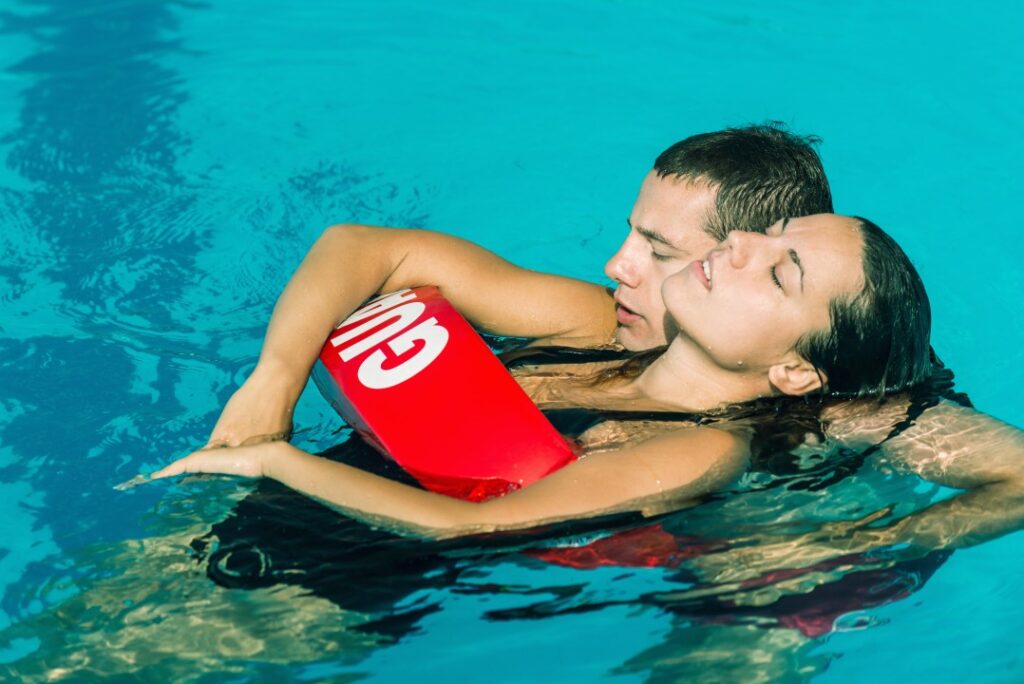Lifeguard courses are essential in getting ready people for the responsibilities related to being a lifeguard. These courses are complete, covering different perspectives to guarantee that lifeguards are exceptional in dealing with assorted circumstances that might emerge in aquatic environments.
From fundamental water safety to crisis response techniques, lifeguard training courses give important skills and knowledge.
Essential Water Safety and Rescue Techniques
One of the essential focal points of lifeguard training is showing fundamental water safety standards. Lifeguards learn how to perceive indications of misery in swimmers, identify possible dangers in the water, and carry out preventive measures to limit risks. They are prepared in different rescue techniques, for example, arriving at help, tossing help utilizing rescue buoys, and performing swimming rescues when fundamental.
CPR and First Aid Training
CPR and first aid training are critical parts of lifeguard courses. Lifeguards are prepared to perform cardiopulmonary revival (CPR) on grown-ups, youngsters, and babies, as well as how to utilize automated external defibrillators (AEDs) when required. First aid skills like injury care, bracing, overseeing spinal injuries, and perceiving and answering intensity-related diseases are additionally covered widely.
Crisis Action Plans and Communication
Viable communication and crisis action plans are essential for a lifeguard’s capacity to answer speedily and productively to emergencies. Lifeguard training courses show understudies how to discuss really with benefactors, associates, and crisis administrations. They likewise learn how to create and execute crisis action plans specific to the facility they work in, including protocols for departures, medical emergencies, and other emergency circumstances.
Physical Wellness and Molding
Being a lifeguard requires a specific degree of physical wellness and perseverance. Lifeguard training programs frequently incorporate wellness and moulding parts to guarantee that lifeguards are physically fit to play out their obligations. These parts might incorporate swimming capability tests, perseverance exercises, strength training, and rehearsing rescues in recreated situations to plan lifeguards for genuine circumstances.
Lawful and Moral Responsibilities
Lifeguards have lawful and moral responsibilities to safeguard the safety and prosperity of people at aquatic facilities. Lifeguard training courses instruct understudies about their legitimate obligations, including duty of care, carelessness prevention, and episode announcing. They additionally cover moral contemplations, for example, maintaining professionalism, regarding benefactors’ privileges, and sticking to facility strategies and methodology.
Proceeding with Education and Recertification
Commonly, lifeguard certification stays substantial for a set span, after which lifeguards should go through recertification to keep up with their qualifications. Lifeguarding courses might give continuous education opportunities to assist lifeguards with remaining refreshed on prescribed procedures, arising techniques, and administrative changes. These courses likewise get ready lifeguards for recertification tests, guaranteeing that they stay skilful and fit in their roles.
Picking a Lifeguard training Program
When taking into account choices for lifeguard training, people can search for “lifeguard classes near me ” to find courses presented by trustworthy organizations. The American Lifeguard Association (ALA) stands apart as a believed organization that provides extensive lifeguard training programs.
ALA-certified courses cover all essential parts of lifeguard training and are perceived by numerous businesses in the aquatic business. Furthermore, people can research the educational plan, teachers’ qualifications, and audits from past members to pick the best lifeguarding program for their requirements.
High-level Water Rescue Techniques
Past essential rescue techniques and lifeguard courses frequently guide cutting-edge water rescue techniques. These techniques are intended to deal with seriously testing rescue circumstances, for example, different casualty rescues, lowered endlessly rescues including oblivious casualties. Lifeguards learn how to focus on and deal with these mind-boggling circumstances successfully, guaranteeing the safety of all people.
Risk Management and Episode Prevention
Risk management is a crucial part of lifeguard training that spotlights identifying expected dangers and carrying out procedures to prevent episodes before they happen. Lifeguards are prepared to lead ordinary facility inspections, evaluate water conditions, and uphold safety rules to limit risks.
They additionally learn how to instruct benefactors about water safety practices and answer proactively to possible risks, diminishing the probability of accidents and emergencies.
By integrating these high-level themes into lifeguard courses, people gain an extensive understanding of their roles and responsibilities as lifeguards. This knowledge prepares them to deal with many situations, advance a protected aquatic environment, and safeguard the prosperity of swimmers and benefactors.
Final Word
In conclusion, lifeguard courses are essential for people hoping to seek a career as a lifeguard. These courses cover a great many points, including essential water safety, CPR and first aid, crisis action plans, physical wellness, lawful and moral responsibilities, and proceeding with education.
By picking a legitimate lifeguard program, people can acquire the skills and certification important to guarantee the safety and prosperity of others in aquatic environments. The American Lifeguard Association (ALA) offers quality lifeguard programs that prepare lifeguards for the difficulties they might face at work.

